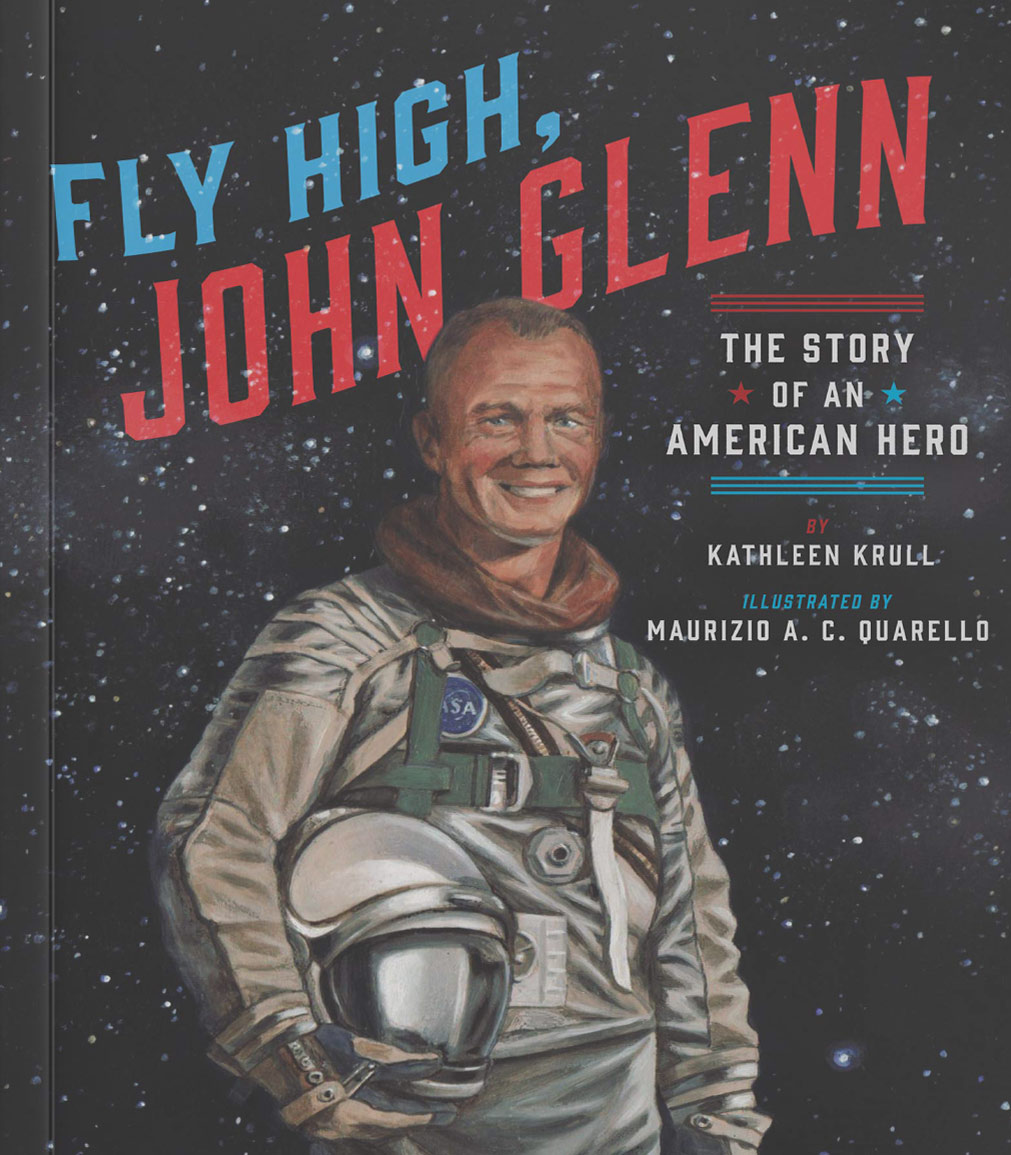ohn Glenn, one of America’s bravest and boldest explorers, is remembered most for his inaugural orbit of the Earth. He broke the boundaries of the Earth’s atmosphere, launching America into space exploration. Fly High, John Glenn: The Story of an American Hero by Kathleen Krull (HarperCollins, 2020) weaves brilliant illustrations and text—more advanced than some picture books—to invite readers to travel along on Glenn’s space adventures as well as on his endeavors after he retired from the space program.
Born in Ohio in 1921, John became intrigued by flight as a young boy. His parents thought flying was dangerous, but John was not discouraged. Determined, he earned his pilot’s license. In 1942, John entered the Naval Aviation Cadet Program so he could fly for our country. He flew combat missions in World War II as well as the Korean War and later became a test pilot. His service in the U.S. Senate began in 1974. Amazingly in 1998, at the age of seventy-seven, John became a member of the Discovery Space Shuttle crew, becoming the oldest person to fly in space. A bold, courageous American, John Glenn died December 8, 2016.
John was one of the original seven Mercury astronauts chosen from hundreds of test pilots after being assessed through rigorous physical and mental test procedures. Flying on the Friendship 7 mission, John orbited the Earth three times. View the video from this mission here.
The National Aeronautics and Space Administration, or NASA, recorded air-to-ground conversations with the astronauts on the Mercury through Apollo missions. These conversations make intriguing read-alouds and can enhance learning. The transcripts are available to read here.
John had a passion for flight and flew a variety of aircraft, including planes used in World War II. Research the F-86 Sabre, one of the planes he flew. The Smithsonian National Air and Space Museum hosts a page dedicated to World War II aircraft at https://www.si.edu/spotlight/wwii-aircraft. Consider attending an air show, visiting an aviation museum, interviewing a pilot, or researching medical missions aviation.
Research and experiment with different types of modes of flight. Try building and launching a rocket, crafting and building a balsa wood glider, flying a kite, or having a paper airplane folding and flying contest. Talk about how wind current affects flight patterns.
Later in life, John Glenn came out of retirement from the astronaut program to spend nine days on board the space shuttle Discovery, which launched October 29, 1998. He was the oldest human to venture into space at age seventy-seven. While on the Discovery mission, John participated in research to study the aging process. As a family, talk about the ways in which a person, at any age, can contribute and make a difference in the lives of others.
John Glenn boldly gave his life to public service for the United States, risking his life in the military, exploring space as an astronaut, and serving as a senator. There are many life lessons children can take away from how John Glenn faced both opportunities and challenges.

